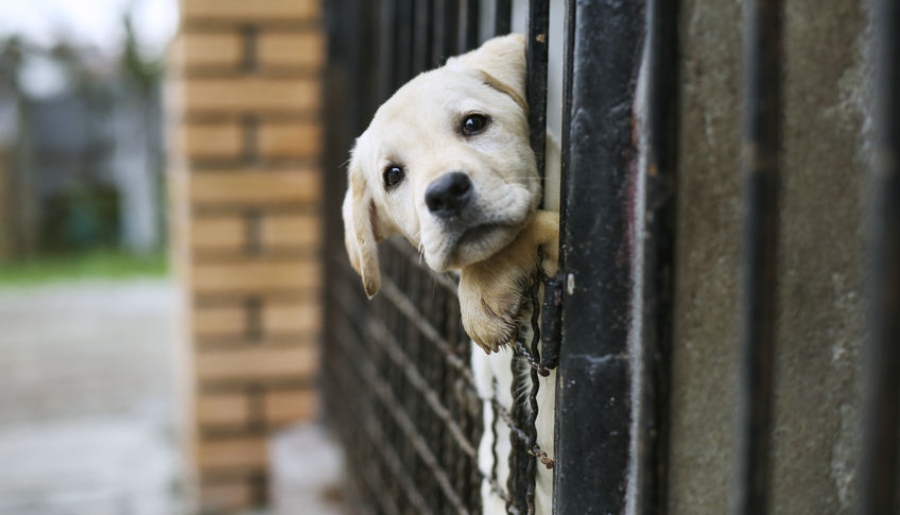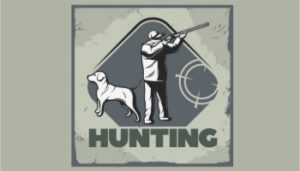
When I first got my Labrador retriever, I was confused about several things. As I was accustomed to German Shepherds and other long-haired breeds, I didn’t really consider whether or not they can live outside year-round. So, I did some research and here is what I found.
Can Labradors live outside? The answer is yes. However, they are a short-haired breed, which means that certain measures must be taken to ensure their comfort and safety in colder conditions. Also, their high-energy nature makes them more likely to get into trouble if they get bored, and this should also be taken into account.
This subject is not quite as straight-forward as you might think. When you consider the wide variety of situations in which people (and dogs) live, it makes sense. Read on, and you might learn a few things about keeping your Labrador safe and comfortable in the outdoors.
Can’t All Animals Live Outside?
The truth is, not all animals can do this. It is true that wild animals can do this, but even still, they are limited to a particular range of environments. For instance, a python would never survive in the Arctic for even a single day, nor would a penguin be able to survive in the desert. With dogs, this is even truer because they have been altered by humans through the process of selective breeding. The Labrador retriever is not suited to the wild because it has never lived in the wild. We created it.
What Role Does Climate Play?
The climate of your area plays a large role in these considerations. Unless you happen to live in a very temperate area, you probably have extremes of temperature that your animal has to withstand. For this article, we will assume that you are not bringing your dogs inside for the entire year. In practice, you should bring your dogs inside as often as possible because of their social nature.
If you live in a climate that is cold for most of the year, like Alaska or Northern Canada, you really should consider notleaving your dogs outside year-round. In fact, you probably shouldn’t be keeping a Labrador if you live that far to the north. As much as I love Labs, I would have to say you would be better off with a Siberian Husky or something like that.
If you are like me, and your area only gets cold at certain times of the year, you can realistically keep a short-haired dog such as a Labrador. In my area, Pit Bulls and Amstaffs are very common, and they are also short-haired. So, the first thing we will need to discuss is the enclosure.
The Enclosure
The enclosure is the area in which your dog will live. It may consist of an entire fenced-in yard, a fenced-in corner of the yard, or a kennel. Keeping your dog tied up is not recommended because there is virtually no shelter available. We will deal with the winterization of these enclosures separately.
Winterization Of A Fenced-In Yard:
You will need to provide your dog with a warm shelter. There are many ways in which to do this. However, don’t just give them a box or a crate and expect that to be enough. You need to provide them with a well-insulated shelter that will keep them warm by retaining body heat. There are literally thousands if not millions of ways to improvise a shelter, as the hobos of the world can attest. However, I have a simple trick for this, and I would like to share it with you.
Chances are, you’ve already got a doghouse or a “dogloo” for your dog. If not, shame on you. Go out and buy one right now! Once you have your doghouse, you will bury it. Take a shovel and heap dirt on top of the doghouse, making sure not to cover the entrance. Continue heaping dirt on top, spreading it evenly to create a thick layer of earth. Pack it down with your hands to help keep it in place. Now, we will turn this mud-covered doghouse into a “hobbit hole.”
Find an unused corner of your yard and use your shovel to remove only the top layer of dirt. The contents of your shovel should be mostly grass and roots and only a thin layer of dirt. Remove the turf in small squares and lay it out next to your doghouse. Now you just put the turf patches on top of the doghouse, packing them down with your hands a little bit as you fit them together. Make sure you put hay, straw, or scrap cloth in the dog-hole so that they can curl up on something warm. As a final step, hang strips of thick, overlapped cloth on the door to provide a little bit of wind protection. By the time you are done, you will have a doghouse that is both appealing to the eye and warm for the dog.
Winterization For A Kennel:
First of all, make sure that your kennel is at least ten feet by ten feet. Anything less is just not enough for a dog of this size. During the winter, you should try to keep your dog from coming in contact with the bare ground, as it will lower their body temperature and expose them to moisture. I do this by putting down a layer of gravel, followed by a layer of large stones. I got the idea by studying the way that the ancient Romans built their roads. On top of the stones, a layer of hay or straw is added to provide insulation and protection from the cold stone surfaces.
You will most certainly need to cover the walls of the kennel. The more you can keep the wind out of the kennel; the warmer your animals will stay. Ideally, you can just buy four large tarps and hang them on the sides, with another for the roof. However, large tarps aren’t so cheap when you are buying lots of them. If you are on a budget, you can use thick sheets of painter’s plastic, which tends to be very cheap. Bear in mind that you do want some ventilation, so don’t try to wrap the entire thing like its a piece of leftover turkey.
Winterization For A Corner Pen:
For this kind of setup, you can go either way. You can choose to winterize it like a full yard, like a kennel, or you can mix the methods.
What About Hot Weather?
As you may have noticed, I have focused on the cold in this article. This is deliberate because the cold presents a much greater danger to the survival of your animal. If you live in a hot, dry area in which you feel the temperatures could be dangerous, the answer is very simple: Always make sure that your dogs have water. Other than that, the only thing you can do is make them a nice shady place to lie down.
Other Dangers:
The weather is not the only potential danger to the safety and health of your animal. There are a variety of other things you must take into account. First of all, you should think about the other dogs that live in your area. If any of the neighborhood dogs seem dangerous to yours, it would be a bad idea to have your dog running loose in the yard. If you live in an area where wild animals might be a risk, this risk is even greater. Consider also the risks of theft by humans. You should always situate your kennel as close to the house as possible, and make sure you have a good view of it from as many windows as possible. You may not believe it, but people steal dogs all the time.
Related Questions:
Should I leave my dogs outside all year long?
Most of the time, the answer is no. Even if you live in an area with very pleasant weather, dogs are very social creatures and cannot be happy in isolation. I have noticed that isolation tends to bother a dog much more than physical discomfort. In their natural state, a dog is a member of a group, a tribe if you will. Taking that away from them is detrimental to their health.
Will a short-haired dog die if left alone in the cold?
This varies depending upon the severity of conditions, but it is certainly possible. Even a short-haired dog will be more resistant to the cold than a human. This is because some hair is better than none, and because all dogs have thick skin with a protective fat layer that serves to keep the cold out. However, do not overestimate the insulating ability of this “extra layer.” If the temperature gets below zero and your dog is in wet conditions, they most certainly can become ill or even die.
Can a long-haired dog survive in the heat?
Yes, but the dog will likely be uncomfortable and unhappy. As a consequence, the dog will probably be less active and less engaged due to the irritation that comes from being hot all the time. If you own a long-haired dog, and you live in a hot environment, you should trim their fur from time to time so that they will be a little more comfortable.



